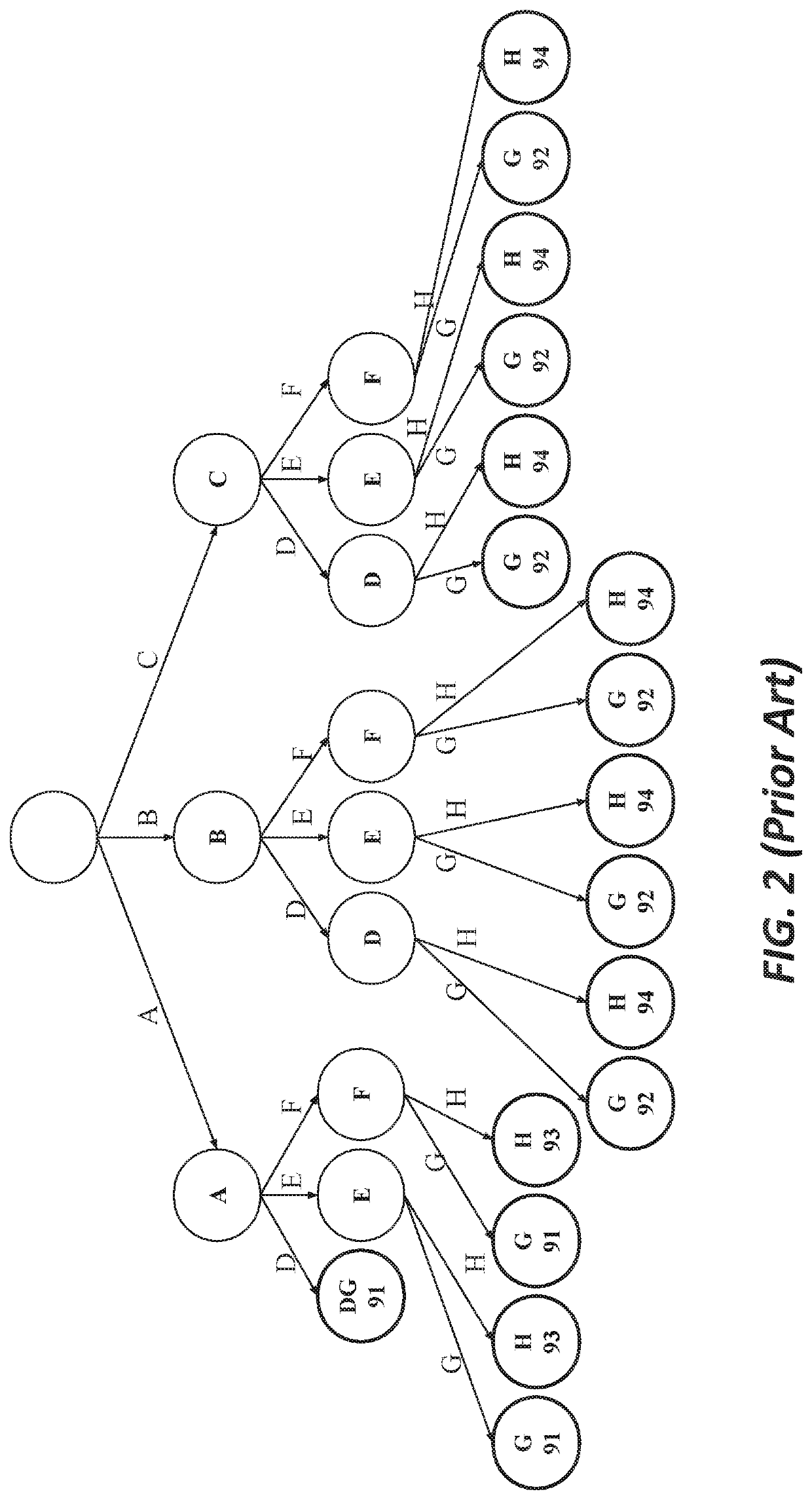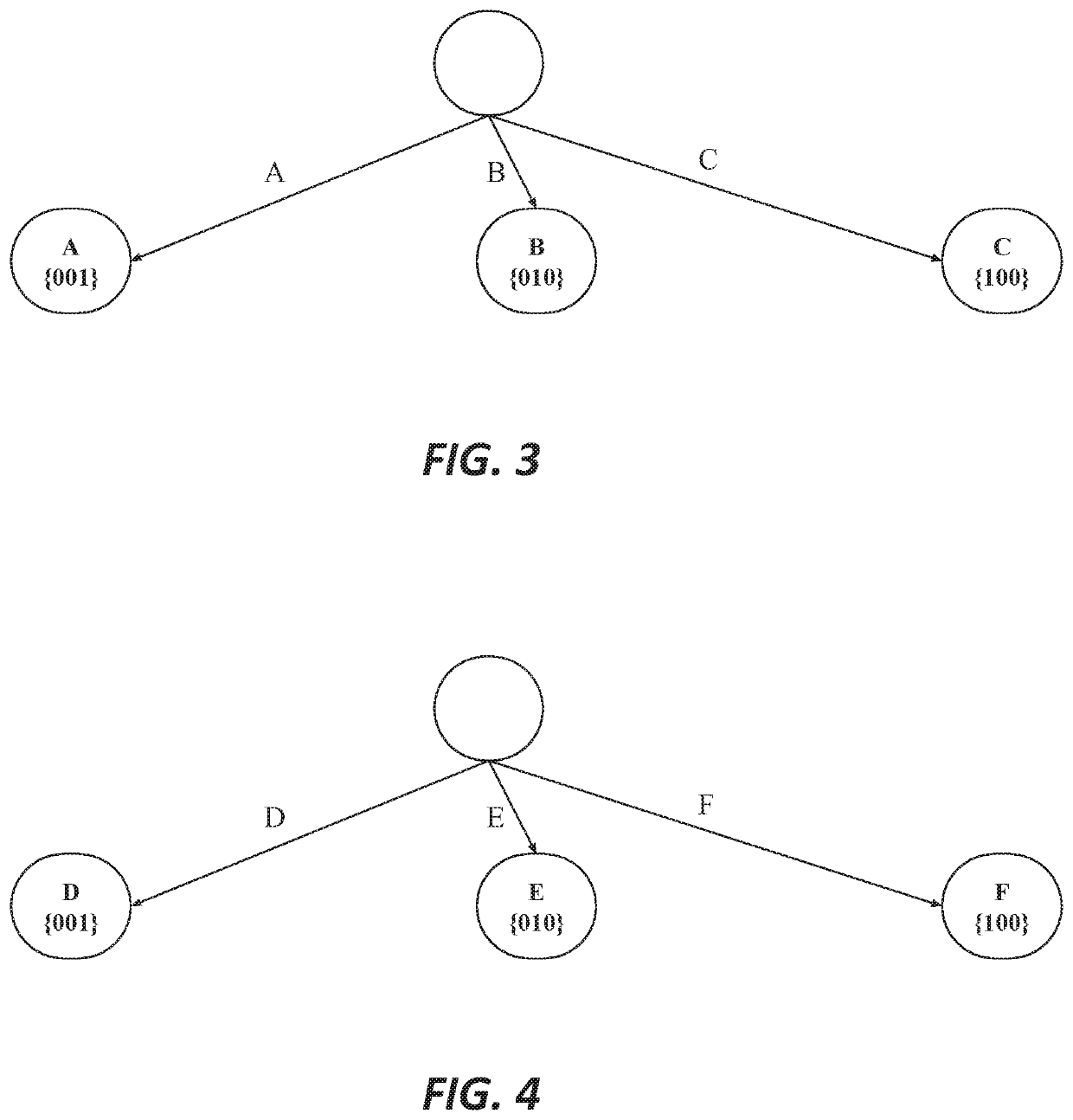Tree deduplication
a tree and tree technology, applied in the field of tree deduplication, can solve the problems of wasting memory space, consuming too much memory, and a large radix tree,
- Summary
- Abstract
- Description
- Claims
- Application Information
AI Technical Summary
Benefits of technology
Problems solved by technology
Method used
Image
Examples
example 1
Lookup Example 1
[0048]Let us walk through a lookup algorithm to match some valid and invalid inputs against the three trees shown in FIGS. 3, 4, 5B.
[0049]Assume that the input key is the string AEH. In this case, the three characters are each a key field. There are three trees for us to match. If at any stage (for any tree) the attempted match fails it can be considered no match and no need to find matches for remaining key fields.
[0050]The first character ‘A’ is found in the FIG. 3 key field tree, which leads us to the first encoded identifier of 001 (value of A is 1 that means first bit is set). The second character is ‘E’, which is found in the FIG. 4 key field tree and gives us a bit array of 010. And the third character is ‘H’, which is associated with two output values, each with two validity bitmasks:
H→{93, 001, 110}
H→{94, 110, 111}
[0051]Given the previously-determined bits set as {001 010} from the lookups of the earlier values for the first and second key fields, respective...
example 2
Lookup Example 2
[0052]Now let us walk the algorithm when there is no match. Assume the input is the string ADH. This path does not exist in the radix tree. The first character is A which yields a bit array of 001 from the FIG. 3 key field tree. The second character is which yields a bit array of 001 from the FIG. 4 key field tree. Turning to the final character and the final key field tree in FIG. 5B, looking up H yields
PUM
 Login to View More
Login to View More Abstract
Description
Claims
Application Information
 Login to View More
Login to View More - R&D
- Intellectual Property
- Life Sciences
- Materials
- Tech Scout
- Unparalleled Data Quality
- Higher Quality Content
- 60% Fewer Hallucinations
Browse by: Latest US Patents, China's latest patents, Technical Efficacy Thesaurus, Application Domain, Technology Topic, Popular Technical Reports.
© 2025 PatSnap. All rights reserved.Legal|Privacy policy|Modern Slavery Act Transparency Statement|Sitemap|About US| Contact US: help@patsnap.com



